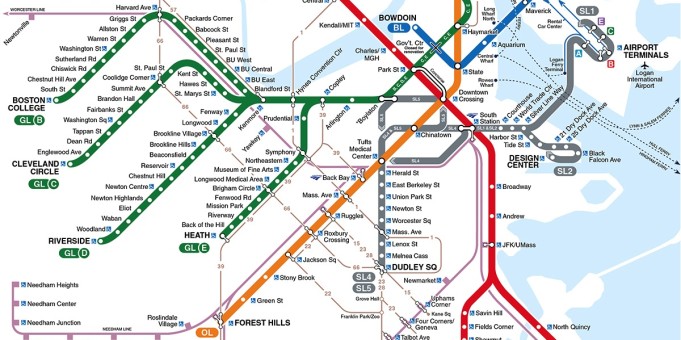Transportation is the leading cause of greenhouse gases in Massachusetts. The majority of emissions come from personal cars and trucks. Recently Green Newton adopted four principles to lower transportation’s greenhouse gas emissions. Here are some thoughts on how these principles can help Newton be a better, greener city.
- Reduce energy use in transportation with improved alternatives. There are a wide variety of options. Locally, we can increase sidewalk safety with curb bump outs or raised crosswalks, so drivers are better able to see pedestrians and vice versa. We can add benches and trees which help young and old walk longer distances. Protected bike lanes increase ridership and double as level pathways for motorized wheelchairs. We can standardize the width of residential side street entrances, so cars naturally slow down when turning off a main road. Statewide, we can join with others to lobby for frequent, reliable bus and train service with extended hours, especially for buses like the #59 which connects express bus stops, the Green Line and Commuter Rail, Newton North High School, the Library, Newtonville, Newton Highlands and Needham Street.
- Change land use zoning regulation to minimize the need to drive. Plan and develop neighborhoods where people can walk to schools, groceries, drug stores, parks, and mass transit. Reduce parking requirements for homes and businesses in walkable neighborhoods, let business owners and fire marshalls, not car parking spaces, decide the number of chairs in a coffee shop.
- Work towards a zero carbon fleet. We should begin with our school buses. Air quality inside of a diesel bus is worse than outside. The same is true for most cars, especially those next to idling vehicles (idling pollutes more than moving vehicles). Asthma, cancer, heart disease, and Parkinson’s are just a few of the conditions linked to air pollution. Electric vehicles use roughly half the energy of standard vehicles, even less if the electricity is green!
- Use fuller cost accounting and potential for other economic benefits when evaluating transportation projects. There are high costs to redesigning roads to use less pavement, but there is also a cost to not reducing pavement. Paved areas increase flooding, heat island effects, and polluted water runoff into our rivers. Trees cost money to plant and maintain, but trees also save the city money by filtering polluted air and water. Shaded streets also reduce road temperatures meaning pavement lasts longer and will have more people walking and biking on them.
Learn more about Green Newton’s new Green Transportation Principles on our website: greennewton.org under the Advocacy tab or join us at our next Green Transportation meeting on Friday, January 24, at 11 am. E-mail jcpurdy02464@gmail.com for more information.



Recently on Twitter